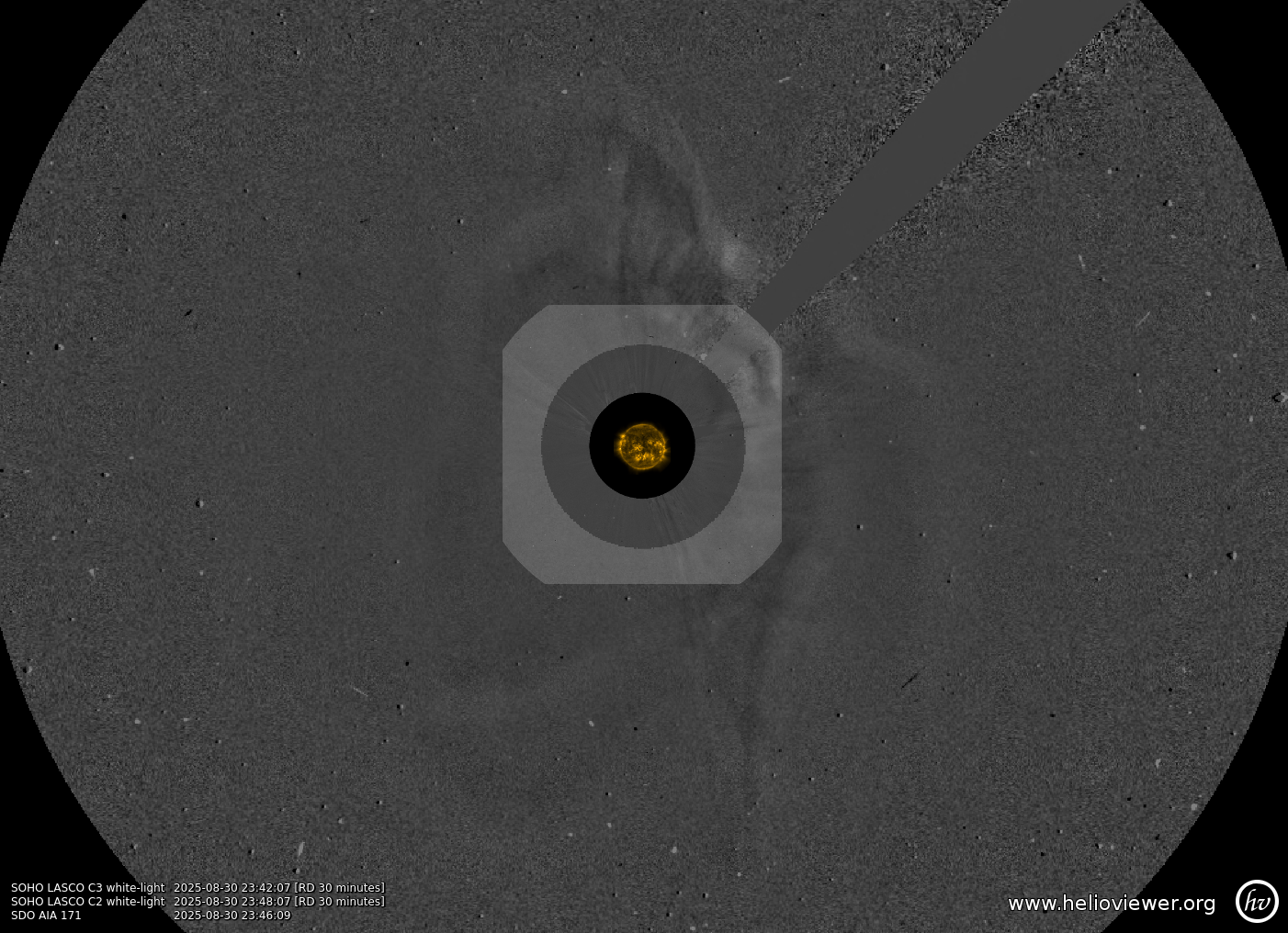Geomagnetic storm forecast - 1st September 2025
What Has Happened?
We are expecting an increase in geomagnetic activity on Monday night and into Tuesday due to the arrival of an Earth-directed Coronal Mass Ejection (CME).
An M2.7-class solar flare occurred near the centre of the solar disk on 30th August 2025 peaking at 20:02 UT. This Flare produced an Earth-directed CME. The arrival of the CME is expected to enhance geomagnetic activity on Monday 1st September 2025 up to geomagnetic storm levels, possibly peaking at G3 or even G4 on the NOAA scale.
Assuming clear dark skies, there is an increased chance of seeing the aurora Monday night, possibly Tuesday, September 1st-2nd. Those in Scotland, northern England and Northern Ireland have the best chance if the weather is favourable.
Sign-up to receive Geomagnetic Disturbance Alert emails.
Follow us on Twitter:
Follow @BGSauroraAlert for more occasional aurora alerts.
Follow @BGSspaceWeather for daily space weather forecasts.
Glossary
- BGS
- The British Geological Survey is a geoscience research centre that is part of UK Research and Innovation (UKRI) and affiliated to the Natural Environment Research Council (NERC).
- CME or Coronal Mass Ejection
- The eruption of a portion of the outer atmosphere of the Sun into space, caused by rapid changes in its magnetic field. Often occurs along with a solar flare.
- Solar Flare
- Energy released by the explosive reorganisation of magnetic fields within the Sun's atmosphere.



